The Manhattan Project
A very brief introduction to the physics of nuclear weapons
B Cameron Reed
Alma College, MI, USA
Morgan & Claypool Publishers
Copyright 2017 Morgan & Claypool Publishers
All rights reserved. No part of this publication may be reproduced, stored in a retrieval system or transmitted in any form or by any means, electronic, mechanical, photocopying, recording or otherwise, without the prior permission of the publisher, or as expressly permitted by law or under terms agreed with the appropriate rights organization. Multiple copying is permitted in accordance with the terms of licences issued by the Copyright Licensing Agency, the Copyright Clearance Centre and other reproduction rights organisations.
Rights & Permissions
To obtain permission to re-use copyrighted material from Morgan & Claypool Publishers, please contact .
ISBN 978-1-6817-4605-0 (ebook)
ISBN 978-1-6817-4604-3 (print)
ISBN 978-1-6817-4607-4 (mobi)
DOI 10.1088/978-1-6817-4605-0
Version: 20170501
IOP Concise Physics
ISSN 2053-2571 (online)
ISSN 2054-7307 (print)
A Morgan & Claypool publication as part of IOP Concise Physics
Published by Morgan & Claypool Publishers, 40 Oak Drive, San Rafael, CA, 94903 USA
IOP Publishing, Temple Circus, Temple Way, Bristol BS1 6HG, UK
This work is dedicated to Laurie.
Again.
Contents
Preface
No student of physics can resist learning about nuclear weapons. Whether you consider these devices a blessing which helped end the most brutal war in history and subsequently deterred further large-scale conflicts, or regard them as a curse which should never have been released upon the world, the power that they bestow on their holders and the influence they have in global affairs cannot be overstated. The science which underpins them is fascinating; learning anything about them gives one a sense of being close to their power and of being privy to otherwise forbidden knowledge.
Nuclear weapons are now nearly 75-year-old technology. First developed by the United States Army in World War II in an effort which came to be known as the Manhattan Project, they represented the fruition of discoveries that dated back to the beginnings of nuclear physics in the decade before World War I. Yet, the physics of nuclear weapons is not normally part of the syllabus of most college and university-level science courses; even most physics majors likely have only a vague notion of how they work. I have written this book for physics students who wish to apply some of the scientific concepts and mathematical techniques they have encountered to understanding something of first generation fission weapons: what principles underlie them, how they are made, how they function, and what are some of their effects.
This book is not a conventional text. My purpose is not to develop concepts or derivations from first principles; there exist many very good and very comprehensive treatments of the history and physics of the Manhattan Project for readers who wish to explore the details (see the Bibliography). Rather, my intent is to whet your appetite to learn more about the Project from such sources by describing some of the relevant background discoveries, and by presenting some key equations and showing how they can be used to carry out approximate but informative calculations. It may come as a surprise to learn that much of the forbidden knowledge surrounding nuclear weapons is quite accessible to a reader armed with an undergraduate-level understanding of physics.
I have written this book assuming a fairly substantial background on the part of its readers. Ideally, you will have had classes in modern physics and basic nuclear physics. You should know that nuclei are comprised of protons and neutrons, what is meant by atomic number (Z) and mass number (A), that chemical elements come in a variety of isotopic forms, what alpha decay and beta decay mean, what abbreviations like U-235, Pu-239,  , and
, and  mean, that energies in nuclear physics are measured in millions of electron-volts (MeVs), that nuclear physicists quantify the probability of a reaction by a cross-section measured in barns, what nuclear fission involves, and the basic idea of how a reactor operates by maintaining a chain reaction of fissioning uranium-235 nuclei while simultaneously breeding plutonium-239 via neutron-capture by U-238 nuclei. I also assume that you know something of the basic history and accomplishments of the Manhattan Project. Chapter offers a brief qualitative refresher on some of the background physics, and an equally brief description of how the Project came to be organized. For a more thorough treatment, the companion volume to this book, Atomic Bomb: The Story of the Manhattan Project, is recommended reading. In essence, my goal here is to fill in some of the physics details that were skipped over in Atomic Bomb. Occasional exercises are scattered throughout the text so that you can try some calculations for yourself: you will get the most out of this book if you do them.
mean, that energies in nuclear physics are measured in millions of electron-volts (MeVs), that nuclear physicists quantify the probability of a reaction by a cross-section measured in barns, what nuclear fission involves, and the basic idea of how a reactor operates by maintaining a chain reaction of fissioning uranium-235 nuclei while simultaneously breeding plutonium-239 via neutron-capture by U-238 nuclei. I also assume that you know something of the basic history and accomplishments of the Manhattan Project. Chapter offers a brief qualitative refresher on some of the background physics, and an equally brief description of how the Project came to be organized. For a more thorough treatment, the companion volume to this book, Atomic Bomb: The Story of the Manhattan Project, is recommended reading. In essence, my goal here is to fill in some of the physics details that were skipped over in Atomic Bomb. Occasional exercises are scattered throughout the text so that you can try some calculations for yourself: you will get the most out of this book if you do them.
This book covers five main topics, one in each of chapters quantifies the energy released in fission and the remarkable brevity of chain reactions, and explores why, out of over 2000 isotopes known to nuclear physicists, only U-235 and Pu-239 are practicable for use as fission-bomb materials. Particularly important in this latter context is an examination of how natural decay processes, specifically alpha-decay and spontaneous fission, limit the number of bomb-fuel candidates.
Chapter addresses the intertwined issues of criticality and efficiency. Perhaps the single most important number one needs to know to develop a nuclear weapon is the so-called critical mass of fissile material necessary. Phrased loosely, the critical mass is the minimum mass of fissile material that can sustain a chain reaction, at least until it blows itself apart. If the critical mass should prove to be, say, 500 kg of a very rare or hard-to-synthesize isotope, it may not be practical to attempt to develop a nuclear weapon. The critical masses of U-235 and Pu-239 are on the order of tens of kilograms, but even these amounts are very hard to acquire from scratch. Related to this is the question of efficiency. A nuclear bomb blows itself apart over the course of mere microseconds, and it proves essentially impossible to fission all of the core material before this happens. Thus, even if a critical mass is within practical reach, one needs to have an idea of the expected efficiency to judge if making a nuclear bomb will be worth the effortor not.
Nuclear weapons would not exist if we were not able to isolate naturally-occurring fissile isotopes or artificially synthesize non-naturally-occurring ones in sufficient quantity. Chapter examines some of the physics behind isolating U-235 by two processes, one electromagnetic and the other based on results from kinetic theory, and of synthesizing Pu-239 by the process of neutron capture within a reactor. Estimates of the scales of time and number of processing steps involved in producing kilogram-level quantities of these substances explain why the industrial facilities of the Manhattan Project grew to such gargantuan proportions.
The end results of the Manhattan Project were two types of nuclear bombs. These were the so-called gun design which employed uranium and was used in the Little Boy bomb detonated over Hiroshima, and the very complex implosion design utilized in the

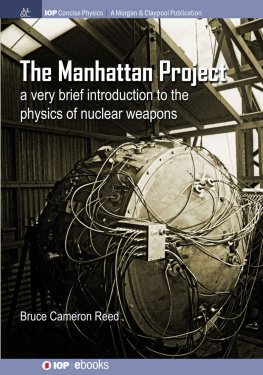


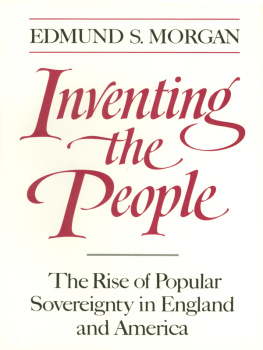
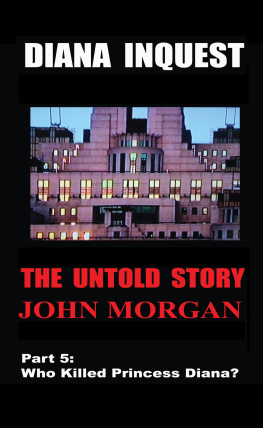
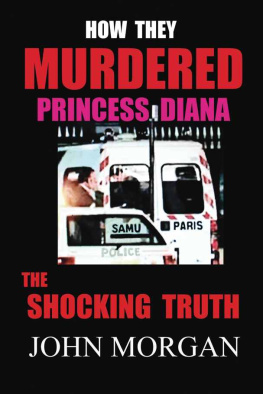


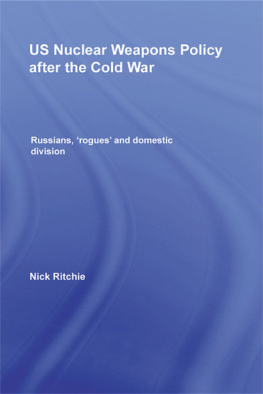
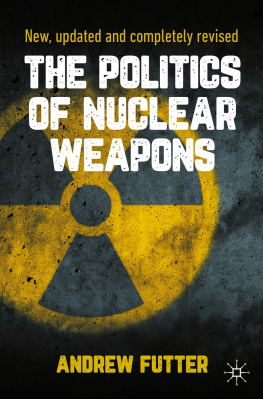
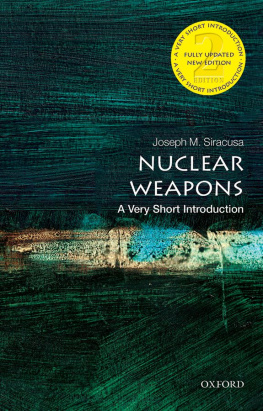
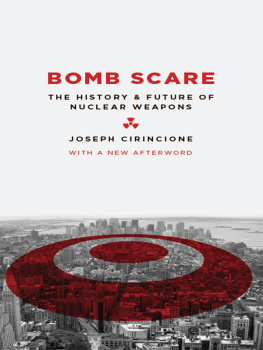

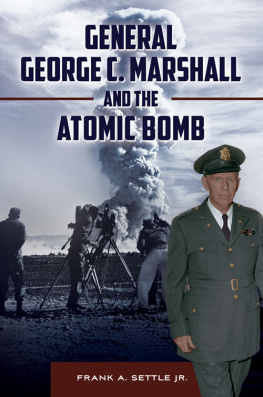

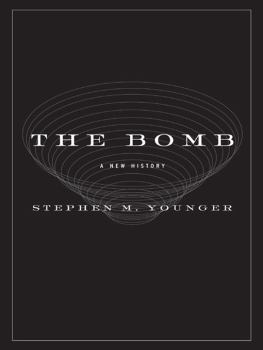
 , and
, and  mean, that energies in nuclear physics are measured in millions of electron-volts (MeVs), that nuclear physicists quantify the probability of a reaction by a cross-section measured in barns, what nuclear fission involves, and the basic idea of how a reactor operates by maintaining a chain reaction of fissioning uranium-235 nuclei while simultaneously breeding plutonium-239 via neutron-capture by U-238 nuclei. I also assume that you know something of the basic history and accomplishments of the Manhattan Project. Chapter offers a brief qualitative refresher on some of the background physics, and an equally brief description of how the Project came to be organized. For a more thorough treatment, the companion volume to this book, Atomic Bomb: The Story of the Manhattan Project, is recommended reading. In essence, my goal here is to fill in some of the physics details that were skipped over in Atomic Bomb. Occasional exercises are scattered throughout the text so that you can try some calculations for yourself: you will get the most out of this book if you do them.
mean, that energies in nuclear physics are measured in millions of electron-volts (MeVs), that nuclear physicists quantify the probability of a reaction by a cross-section measured in barns, what nuclear fission involves, and the basic idea of how a reactor operates by maintaining a chain reaction of fissioning uranium-235 nuclei while simultaneously breeding plutonium-239 via neutron-capture by U-238 nuclei. I also assume that you know something of the basic history and accomplishments of the Manhattan Project. Chapter offers a brief qualitative refresher on some of the background physics, and an equally brief description of how the Project came to be organized. For a more thorough treatment, the companion volume to this book, Atomic Bomb: The Story of the Manhattan Project, is recommended reading. In essence, my goal here is to fill in some of the physics details that were skipped over in Atomic Bomb. Occasional exercises are scattered throughout the text so that you can try some calculations for yourself: you will get the most out of this book if you do them.